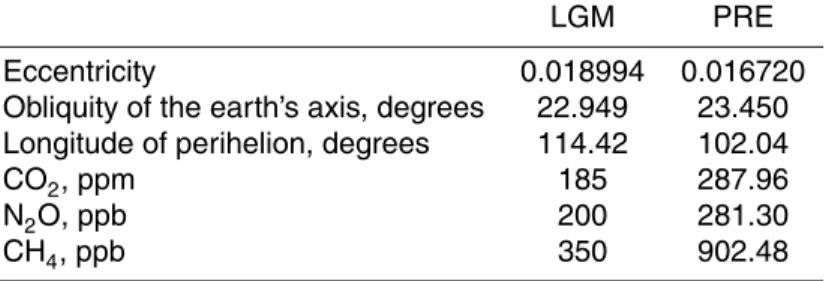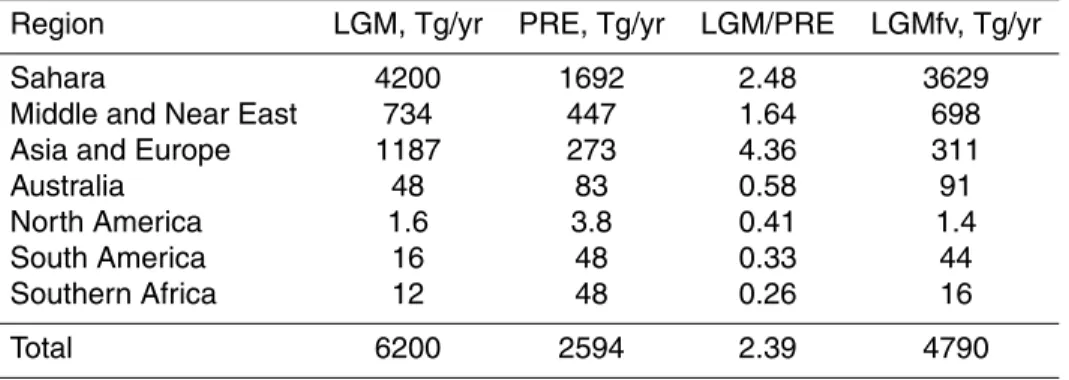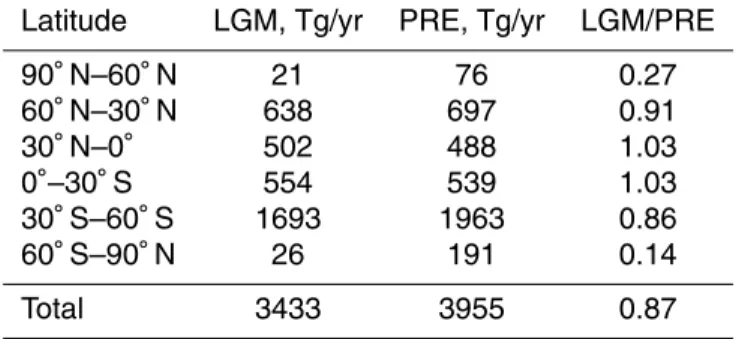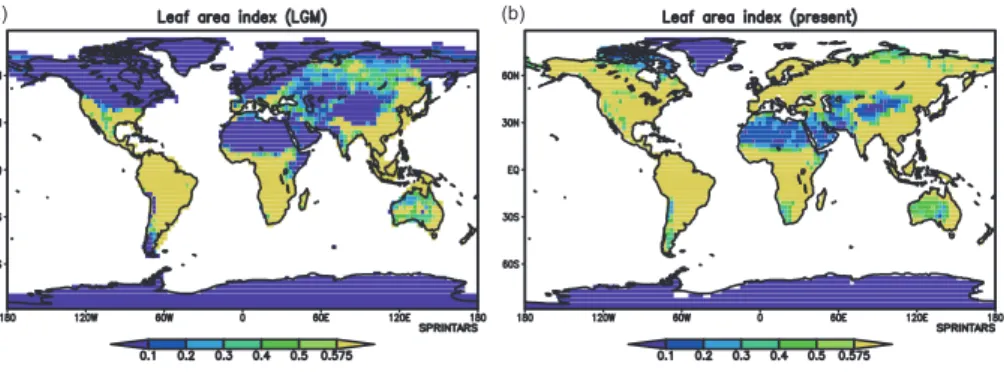Global distribution and radiative forcing of soil dust aerosols in the Last Glacial Maximum simulated by the aerosol climate model
Texto
Imagem




Documentos relacionados
Daily mean distribution of the (a) AI retrieved from the OMI satellite data and simulated optical depth of (b) dust aerosols and (c) carbonaceous and sulfate aerosols from 21 to
7 a, over north Africa in boreal summer 98% of the desert dust pixels over land are plotted in brown and over the North Atlantic 98% of desert dust aerosols extending over the
Here we assess the aerosol optical depth ( τ ), direct radiative effect (DRE) by natural and anthropogenic aerosols, and direct climate forcing (DCF) by anthropogenic aerosols,
The model has been used to study the impact of aerosol direct radiative e ff ect on East Asian climate (Zhang et al., 2012a), direct radiative forcing of anthropogenic aerosols (Bond
To determine whether there is significant influence of five salt dust deposition groups and the control group for the distribution of salt ions and measure the photosynthesis in
The com- bination of cooler SSTs, an enhanced subduction of AABW and the reduction in export production in experiment O-LGM dramatically increased the oxygen content in both the
Because of the increas- ing the speed of the decomposition of the anhydrite, together with the growth of the temperature of casting the bronze to the plaster mould, the gases
al., 2009, 2010) to constrain a 3-D global chemical trans- port model (CTM; GEOS-Chem) simulation of the volcanic aerosol distribution and direct radiative forcing following the





